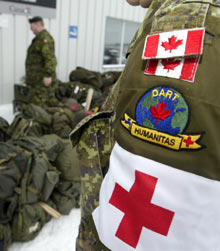Since the powerful Typhoon Haiyan attacked the island nation, leaving a trail of devastation in its wake, Canada is rushing to provide aid to the Philippines. The Disaster Assistance Response Team (DART) has recently been sent over the Pacific bringing over one hundred Canadians onto the scene to assist the country as its people get back onto their feet after what has been cited as one of the worst disasters in the past ten years.
Many Canadians are unaware of DART’s history as a small but important unit that is constantly on standby to provide disaster relief at the order of the Government. The unit consists of members of Canada’s forces who have been fully trained to respond to various crises. The team aspires to response swiftly, effectively, and systematically, all the while recognizing that each situation presents different challenges and requires a unique strategy for successful implementation. Rather than working alone, DART works with the UN and local authorities in most cases to determine the appropriate approach to helping restore the basic needs of the most affected people.
The plan for the Philippines is to send approximately two hundred personnel along with six helicopters to provide support to key areas that have been affected. DART has decided to focus its energy and resources on the islands of Capiz and Illoilo, as well as the city of Rozas. Along with providing a water purification system, food and other necessities, the presence of DART, in cooperation with foreign NGOs and immediate response teams, also hopes restore and maintain order and peace to the area as crime breaks out—a normal response when entire populations are thrown into survival-mode. The capital city of Manilla is also expected to receive large arrivals of people who hope to be reunited with their families.
It is absolutely devastating to learn about the stories of people who have lost their homes, loved ones and livelihoods from the Typhoon. There have been an alarming number of natural disasters that have shocked in the world in the last twenty years. However, I cannot help but feel grateful to be alive in a time in history when we are able to observe how the international community has learned to coordinate its efforts to respond swiftly and compassionately when people in a far corner of the world are in need of help. Contributing forces and supplies is now an expectation of all developed countries, rather than a choice or a favour. The question is not whether or not to give, but how much to contribute.
On a final note, if you are looking for ways to support the humanitarian efforts in the Philippines, the organizations in this link may serve as an excellent starting point.




